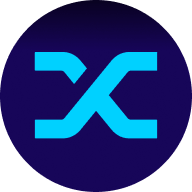
Kusama price

Kusama market info
Market cap = Circulating supply × Last price

KSM calculator


Kusama price performance in USD
Popular Kusama conversions
| 1 KSM to USD | $12.2900 |
| 1 KSM to EUR | €11.2211 |
| 1 KSM to PHP | ₱704.90 |
| 1 KSM to IDR | Rp 210,806.2 |
| 1 KSM to GBP | £9.5350 |
| 1 KSM to CAD | $17.4983 |
| 1 KSM to AED | AED 45.1412 |
| 1 KSM to VND | ₫317,161.3 |
About Kusama (KSM)
- Official website
- Block explorer
Kusama FAQ
Kusama is Polkadot's sister network with specialized blockchains built using Substrate. It provides a testing ground for developers to deploy new projects with a faster governance cycle. Projects can also choose to use Kusama or Polkadot as their primary environment. Many choose to run parachains on both, with Kusama as a pre-production environment. KSM is the native token of Kusama. Holders of KSM, along with an elected council, make governance decisions in a democratic process.
Developers can rent space at a low cost to build projects on Kusama using slots allocated in three ways. First, users can book them through a permissionless auction by locking up their KSM tokens for a specified period. Smaller projects that may not be able to inhabit an entire parachain can opt for parathreads, a smaller version of parachains with the same API but executed on a pay-as-you-go basis with an auction for each block.
Easily buy KSM tokens on the OKX cryptocurrency platform. Available trading pairs in the OKX spot trading terminal include KSM/USDT.
You can also buy KSM with over 99 fiat currencies by selecting the "Express buy" option. Other popular crypto tokens, such as Bitcoin (BTC), Ethereum (ETH), Tether (USDT), and USD Coin (USDC), are also available.
Swap your existing cryptocurrencies, including XRP (XRP), Cardano (ADA), Solana (SOL), and Chainlink (LINK), for KSM with zero fees and no price slippage by using OKX Convert.
To view the estimated real-time conversion prices between fiat currencies, such as the USD, EUR, GBP, and others, into KSM, visit the OKX Crypto Converter Calculator. OKX's high-liquidity crypto exchange ensures the best prices for your crypto purchases.
Monitor crypto prices on an exchange
ESG Disclosure
KSM calculator














Socials